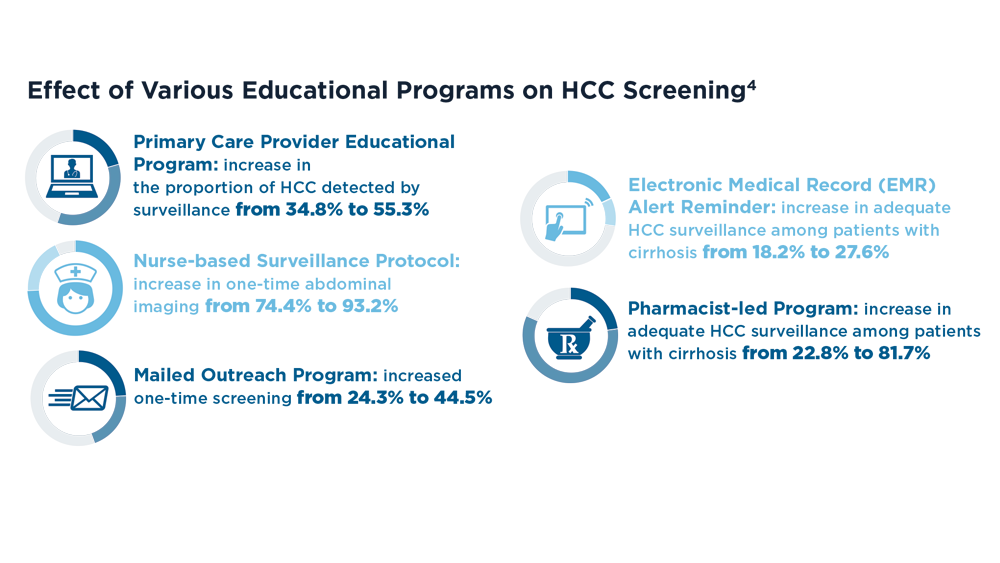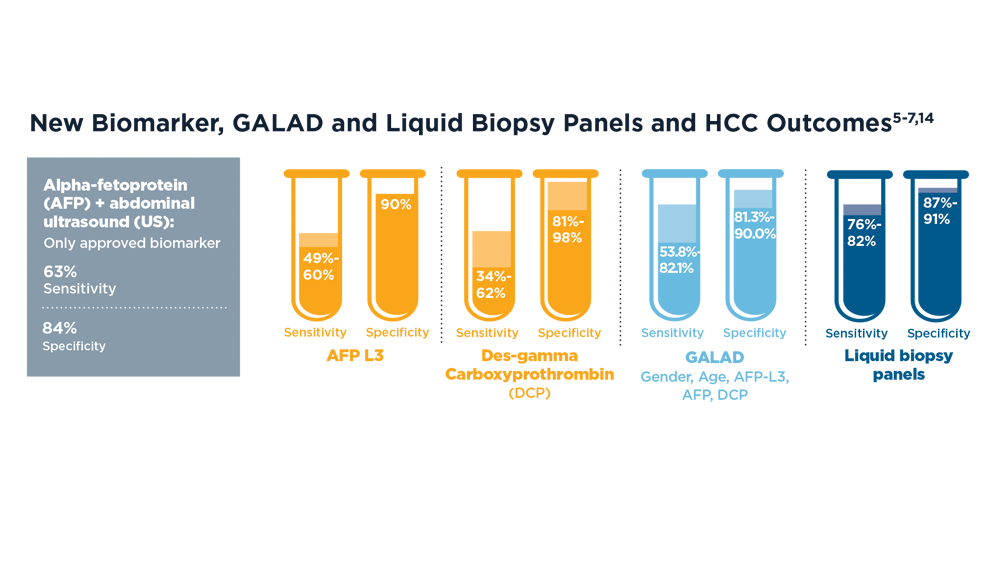Increasing Surveillance Programs and Expanding Treatment Options in HCC
The incidence of HCC has increased over the last 10 years, with more than 1 million cases projected by 2025.1,2 Although mortality rates—which have risen over the past decade—appear to be leveling out, improved surveillance and screening efforts are still critical for decreasing mortality.3 More intensive, multifaceted interventions—such as increasing patient and provider education, which are currently underutilized in clinical care—are needed, as well as the start of earlier screening for HCC.4 The use of new imaging and biomarker, GALAD, and liquid biopsy techniques is also being explored, although these techniques still require validation prior to routine use in clinical practice.5-7 The current ultrasound screening methods alone are not ideal, with sensitivity as low as 47% for detecting early-stage HCC.8
Generally, multidisciplinary care has also been emphasized in the treatment process, using oncologists, radiologists, hepatologists, and surgeons working together to improve clinical outcomes.9 Recent treatment advances have been reported for early-, intermediate-, and late-stage disease. For early-stage HCC, surgical resection and transplant criteria have been expanded through downstaging techniques.10 For intermediate-stage HCC, radioembolization has been incorporated as another therapy, beyond transarterial chemoembolization.11,12 For late-stage HCC, treatment is moving toward immunotherapy, which has generated longer survival than older therapies.13 While HCC remains a cancer of concern, new interventions, tools, and treatments on the horizon can help expand screening and improve treatment outcomes.
1
More Hepatocellular Carcinoma News
- Fewer than 1 out of 4 patients with HCV-related liver cancer receive antivirals
- More than one-third of adults in the US could have NAFLD by 2050
- New biomarker tests could reduce need for liver biopsy
- Drug combo improves recurrence-free survival after HCC resection
- Commentary: Combination therapies and immunotherapy in HCC, December 2022
- Aspirin use confers multifaceted benefits in HCC
- Microwave ablation: An alternative to resection in HCC with BCLC stage 0
- Sequence of radiotherapy and TACE affects the prognosis of HCC with portal vein tumor thrombus
Abdominal Bloating and Distension: Gut Check








